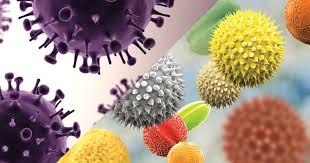COVID-19 and Seasonal Allergies

An allergy (allergic rhinitis) that occurs in a particular season is more commonly known as hay fever . About 8 percent of Americans experience it. Hay

An allergy (allergic rhinitis) that occurs in a particular season is more commonly known as hay fever . About 8 percent of Americans experience it. Hay

Tobacco consumption, specially smoking and waterpipe, affect the lung capacity which may lead to difficulty in breathing, caused by long term harmful effect on cardiovascular and respiratory system leading to elevated risk of various kind of infectious diseases.

the optimal way to prevent airborne transmission is to use a combination of interventions from across the hierarchy of controls, not just PPE alone.

You have confirmed (or possible) COVID-19, and you are being sent home to rest and recover, as your symptoms do not require hospitalization at this time

More than Six months into the COVID-19 pandemic, we’re still learning what the disease can do.One key thing we’re seeing is that severity of lung illness doesn’t always correlate with severity of neurological illness. Having only minor lung illness doesn’t protect against potentially severe complications.

Flu is a contagious respiratory illness caused by influenza viruses that infect the nose, throat, and sometimes the lungs. It can cause mild to severe illness, and at times can lead to death. The best way to prevent flu is by getting a flu vaccine each year

As the COVID-19 outbreak continues to evolve, comparisons have been drawn to influenza. Both cause respiratory disease, yet there are important differences between the two viruses and how they spread. This has important implications for the public health measures that can be implemented to respond to each virus
Recent Comments